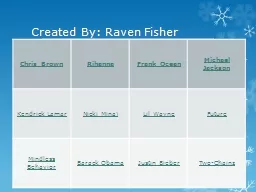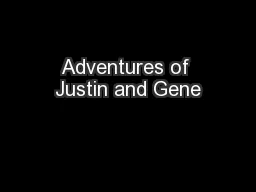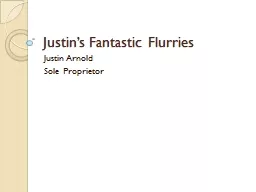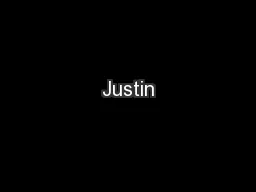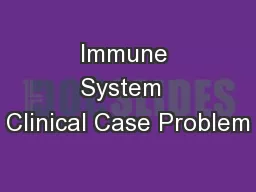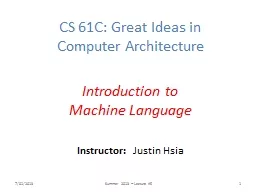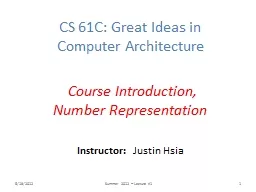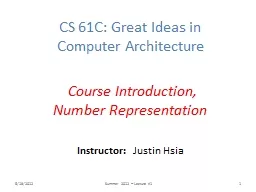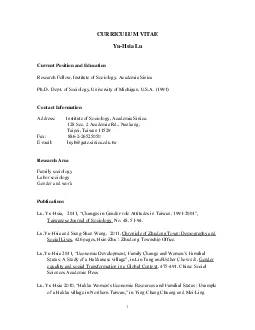PPT-Instructor: Justin Hsia
Author : phoebe-click | Published Date : 2019-06-21
6252013 Summer 2013 Lecture 2 1 CS 61C Great Ideas in Computer Architecture Introduction to C Pointers Six Great Ideas in Computer Architecture Number Representation
Presentation Embed Code
Download Presentation
Download Presentation The PPT/PDF document "Instructor: Justin Hsia" is the property of its rightful owner. Permission is granted to download and print the materials on this website for personal, non-commercial use only, and to display it on your personal computer provided you do not modify the materials and that you retain all copyright notices contained in the materials. By downloading content from our website, you accept the terms of this agreement.
Instructor: Justin Hsia: Transcript
Download Rules Of Document
"Instructor: Justin Hsia"The content belongs to its owner. You may download and print it for personal use, without modification, and keep all copyright notices. By downloading, you agree to these terms.
Related Documents


